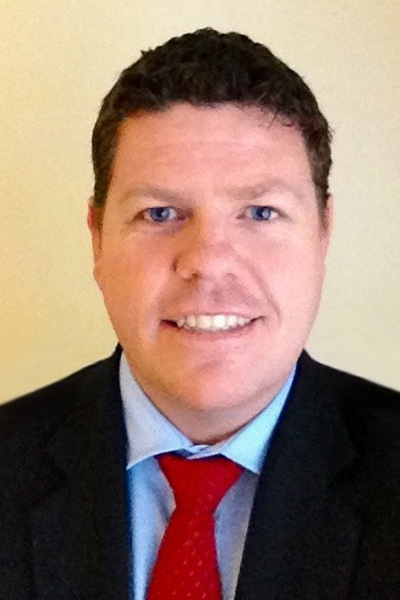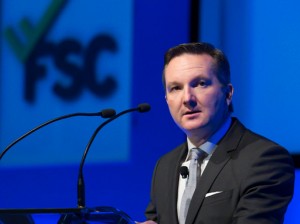Dealer group, Securitor, is challenging all risk specialists to develop their own insurance philosophy. After three years in development, Securitor is rolling out a new program to its advice network which aims to bring a new level of professionalism to the insurance advice process. Securitor Practice Development Manager - Insurance, Mark Angus, outlines the principles behind the program…
Three years before the Australian Securities and Investments Commission (ASIC) issued a warning to insurers and advisers that they needed to lift standards and professionalism, the team at Securitor had already begun a project to elevate the quality of life insurance advice provided to consumers.
“If you think about it, the insurance advice sector has really been standing still,” says Mark Angus, discussing how the program came about. “Nothing much has changed in terms of the way insurance advisers have delivered advice to clients over the last decade. The financial planning market, in contrast, is developing into a professional sector, approaching investing advice in a really well-structured and considered way.”
To deliver on the aim of a more professional life insurance advice sector, Angus and his team of in-house insurance specialists are now working with advice practices in the Securitor network to help them build their own ‘insurance philosophy’.
“The insurance philosophy program is about helping our practices develop a structured, repeatable process, based on their core beliefs, that ensures they can deliver the same level of advice to all their clients,” says Angus.
“As a result of employing this philosophy, advisers are engaging with clients better during insurance discussions, which has resulted in more clients taking out insurance, which is a good outcome for everyone.”
As a result of employing this philosophy, advisers are engaging with clients better during insurance discussions, which has resulted in more clients taking out insurance
The program is built around five core steps. For each step, the practice builds a clear view and process, based on research and the needs of the clients typically engaged by the practice. However, Angus stresses that the individual consumers’ best interests will always come first: “Ultimately all of this is a ‘position’, but the end recommendation will be based on what the client’s goals and objectives are.”
Step 1 – Calculating sums insured
The first step is to determine how sums insured are calculated within the practice. Angus says each type of cover is explored, and a view is formed on what benefits should be used to meet certain client needs. Similarly, advisers are asked to document how they approach calculating cover for self-employed, employed and non-employed clients, and/or any other occupation-specific requirements that may arise.
“In the past, advisers may have selected a nominal sum for medical expenses, for example, but they did not necessarily have any research to back up why that particular sum was chosen. What we do as part of our program is to get the adviser to do the thinking behind that, to justify their calculations,” explains Angus.
Step 2 – Structuring
The next step is determining the adviser’s core beliefs around structuring.
“This is things like how you decide whether cover is inside or outside super, having a position on stepped or level premiums, and also what type of remuneration structure works for the business.”
In the case of remuneration, and whether advisers should receive upfront commissions, Angus says Securitor does not impose a certain model on its advisers.
“But whichever model they choose for their practice, they need to be able to demonstrate why. If advisers understand why they are getting paid in the way that they do, they can have a really transparent conversation with clients about that.”
Step 3 – Implementation
Moving into implementation, advisers develop a process for researching product solutions. This is everything from the software the practice uses, the additional benefits that may or may not be included in a recommendation, through to the underwriting relationships the adviser has with a particular insurer, or the insurer’s claims history.
“Then we go through an internal workflow process, which is essentially the practice management piece, to make sure the practice knows, from start to finish, who does what, when and where. As part of that, we identify whether tele-underwriting, online applications or paper-based forms are the most appropriate for the practice, and why.”
Step 4 – Review process
Angus admits that in the past some advisers have not given as much time and effort to reviewing insurance clients as they have to attracting new ones. “But having a robust review process is vital to delivering high quality, professional advice,” he says.
The review process may take into account things like the timeframe within which clients are reviewed, the ongoing communications used to engage clients, and the triggers that prompt a review of a client’s policy.
“We also encourage all our advisers to review their insurance philosophy and the steps in this process regularly, to take into account legislative changes, or new people in the practice, for example.”
Step 5 – Claims
“Claims is obviously a huge component of the philosophy – it’s why we do what we do. If you’ve chosen a certain provider for your clients, you need to be really familiar with their claims process. We make sure that, for whichever provider(s) the adviser chooses, they’ve got a clear understanding of who to contact, when, why and how.”
The other element of the claims process is being able to articulate that as part of the adviser’s client value proposition.
“Advisers are talking to their clients upfront about the fact they will manage their claims for them. As soon as something happens, the client then knows to get in contact with their adviser.”
Angus says the response to date from new and experienced advisers alike who have begun work on their insurance philosophy has been extremely positive. “A number of advisers have talked about the better conversations they’re having with clients, because of this structured advice process.”
Similarly, the process of documenting core practice beliefs and systems has increased the engagement of practice back-office staff.
“Now, the back office staff understand how the adviser got to the specific recommendation, and what steps they need to take to implement it.”
Securitor’s insurance partners are also upbeat about working with advisers on the program:
“The insurers on our approved product list have really come to the party on this,” says Angus. “They’re asking us to help them play more of a role with the practices in developing their philosophy, and looking for tools that they have that can help an adviser during the various stages.
“Our approach is helping to change the conversation between BDMs and advisers, and hopefully the wider industry. The conversations BDMs have traditionally had with advisers are around product enhancements or new services, not insurance advice. And they’ve been driven by the BDM and the insurer’s agenda, not the advisers’,” says Angus.
“This is a big step forward but it’s one that we firmly believe needs to happen if we want to elevate insurance advice to a profession. Clients deserve good quality, consistent and well-researched insurance advice and we believe having an insurance philosophy will deliver that.”

Mark Angus is an Insurance Practice Development Manager with Securitor & Licensee Select in NSW. Mark’s experience in financial services spans over 15 years where he has worked with many large financial institutions. During this time he has held roles as an Insurance specialist BDM and Practice Development Manager. In his current role, Mark specialises in working with practices to articulate their insurance philosophy and embed this in their business.
Contact or follow the author: Telephone: (02) 8254 8338 | Website | Email

















